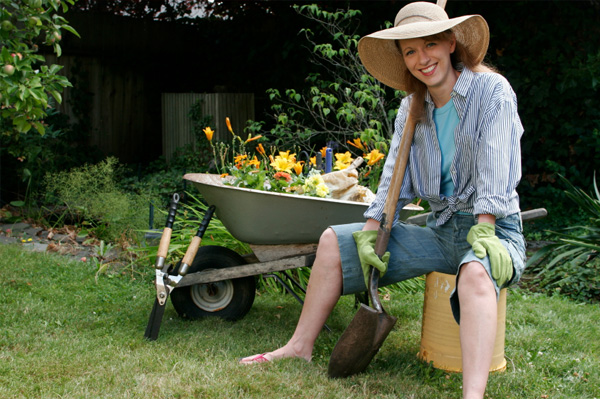
21 May How to Prevent Injury During Yardwork or Gardening

The snow has melted, the air is getting warmer, and the birds are chirping. Many people are excited to finally shake off the doldrums of winter and get outside! Whether you are ready to provide some much needed T.L.C. to your yard or eager to plant the garden, exuberance can lead to aches and pains if the wrong stresses are applied to the body. I have found myself having many discussions with patients lately about concepts to be aware of as we begin these types of activities.
Recently, I have had several patients come to the clinic with the following story: “I was outside working in my garden/landscaping/yard and I was pulling weeds, tilling the ground, planting seeds, or spreading mulch. I was on my hands and knees (or bent over at the waist) working for several hours. I felt fine while I was working, but that evening and the next morning, I was so sore I could hardly move!”
Let’s evaluate this story. Many of us do not often assume these positions so it was a new type of stress to the body. Just as you would not run a marathon without proper training, the body must be gradually introduced to new stresses. Not only was it a difficult position, but the person maintained the position for several hours. Many people are surprised that this resulted in pain as they did not feel much discomfort while doing the activity. More than likely, the task itself distracted the individual from some of the warning signs of impending trouble.
With a few quick changes, individuals can participate in these activities in ways that don’t result in musculoskeletal pain. The first piece of advice I would give is simple: take breaks! It may take longer to complete the project, but I think we can all agree that a little extra time is worth not feeling pain in the knees, back, or shoulders. The second recommendation I often make is to take a small stool out to the garden with you. Sitting on a low stool while working at ground level is much easier on your joints compared to flexing at the waist or being on your hands and knees for several hours.
Lastly, it is very important to be aware of proper lifting and carrying mechanics as these tasks are quite common with this type of work. We’ve all heard to lift with the knees and not with the back. Let me take this a step further with some other tips. First, if you are lifting or carrying an object, get your body as close to the object as possible. As you bend your knees and squat down, try to keep a slight arch in your back. Before you actually begin to lift, an easy trick to help make sure your spine is in the right position is to simply look up. Looking up raises your head and shoulders and helps to maintain the arch in the low back. When carrying an object, holding it close to your body allows the larger muscles of the body to accept the weight and reduces the risk for injury.
It feels great to be outside and enjoy the fresh air this time of year! Follow these tips and it will help to make your experience one that is successful and enjoyable for a long time to come. If you have further questions about specific activities or feel that you may benefit from help to improve your ability to perform these activities around your home, please contact us and we will be happy to provide you with individualized care and assistance.
Kevin Sanborn, PT, DPT




